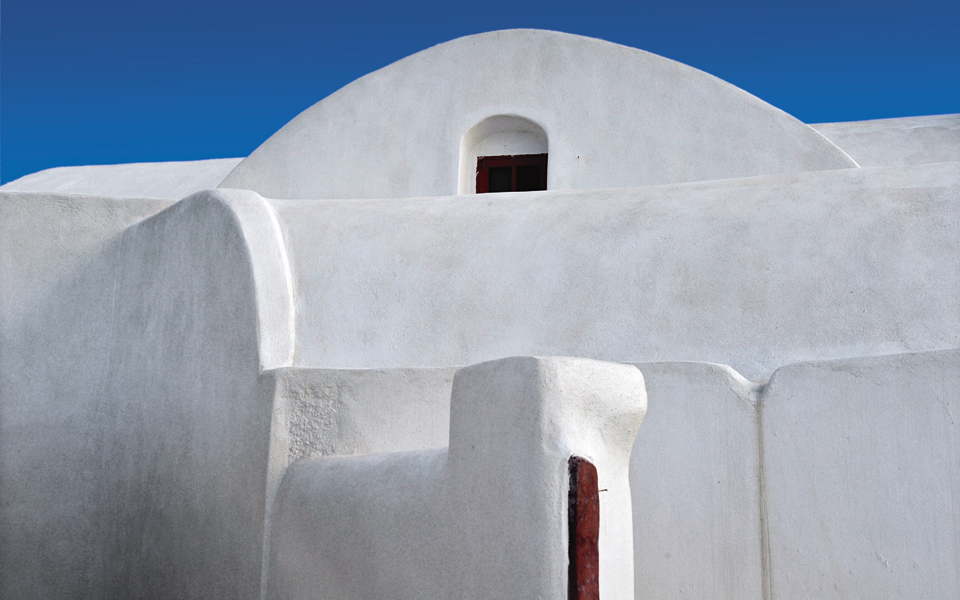Celebrated Swiss-French architect Le Corbusier visited Santorini in the 1920s and his enthusiasm for the plasticity of the ekistic forms, the wisdom of anonymous vernacular architecture and the whitewashed homes is clearly reflected in the modernist movement of architecture. The scene that greeted Le Corbusier a century ago has remained virtually unchanged today: gazing down from Oia at the caldera and its lava-tinted walls, with the volcano in the center; scanning the landscape and the almost organic form of the settlement’s buildings; wandering through this vibrant, outdoor museum of architectural sculpture. The creators clearly had centuries of experience behind them but also seemed to enjoy complete freedom of expression. Some excavated into the rock, others balancing right at the edge of the caldera, the buildings coexist so harmoniously that it is difficult to see where one property begins and the other ends. The very notion of private property acquired a different definition. The courtyard of one house is the terrace of another; below one field lies the home of a different owner. Private and public space are fluid concepts.
Some dug into the rock, others balancing right at the edge of the caldera, the buildings coexist so harmoniously that it is difficult to see where one begins and the other ends.
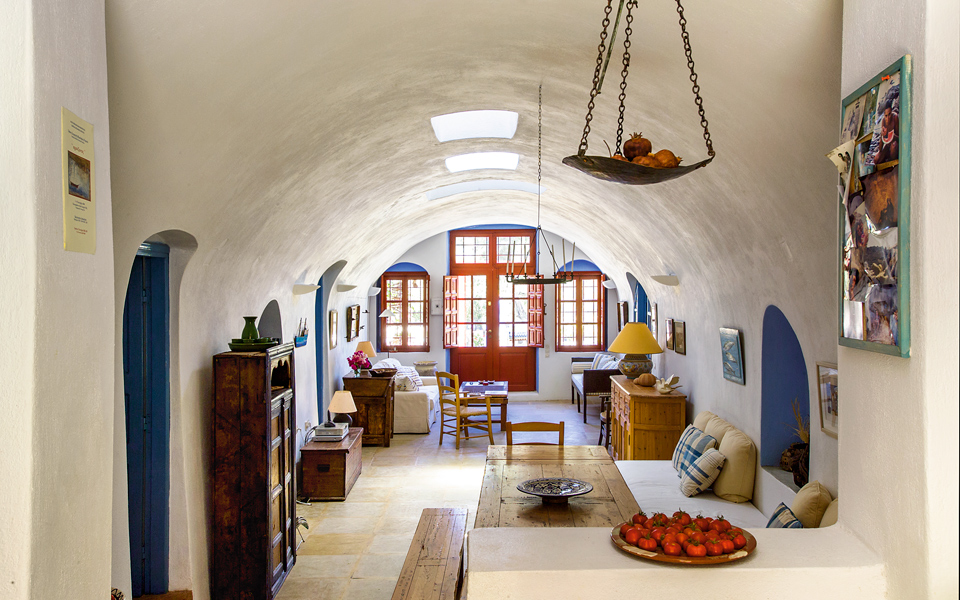
(Architect: Voula Didoni).
© Lefteris Miaoulis – Kiriaki Dovinou
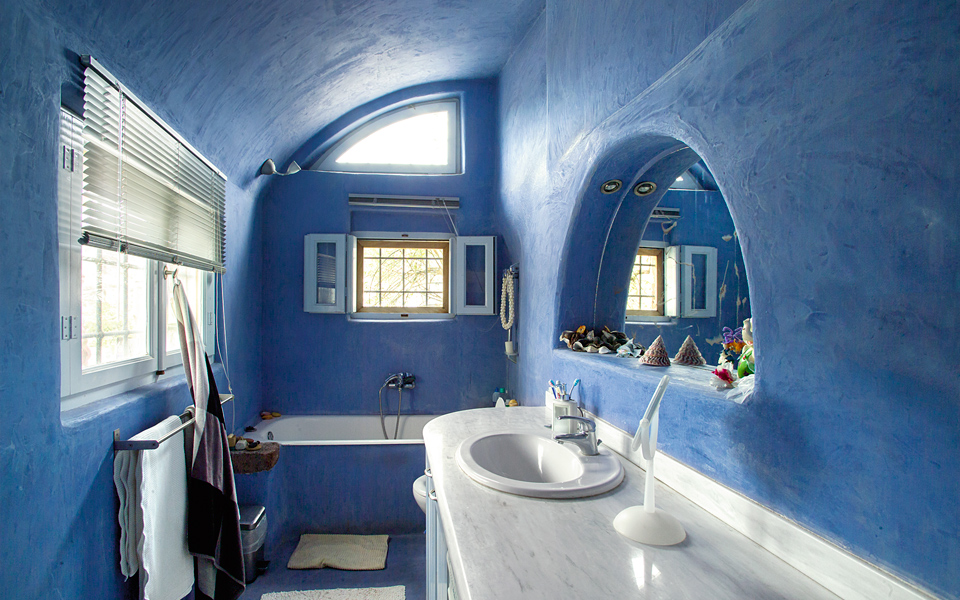
© Lefteris Miaoulis – Kiriaki Dovinou
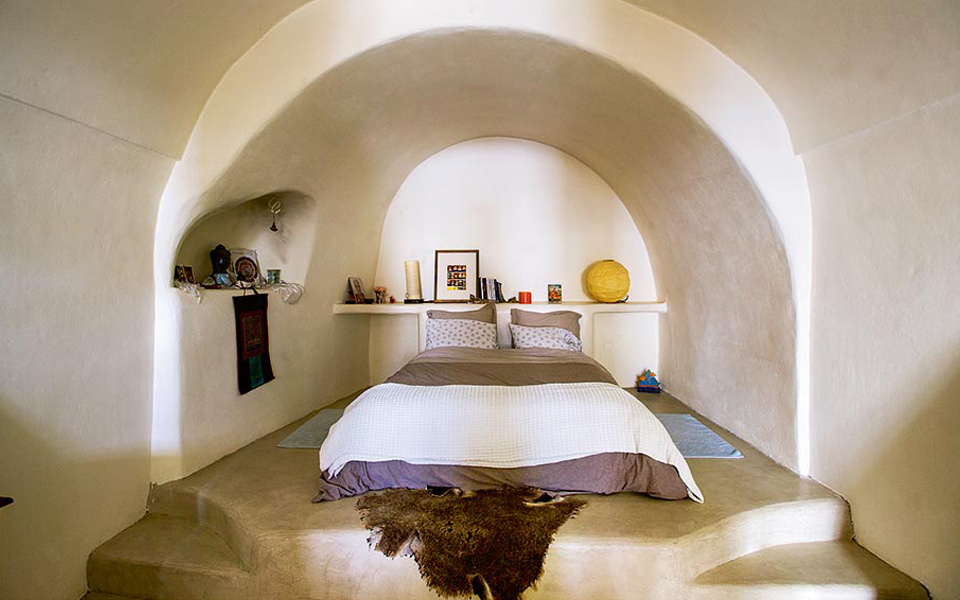
© Lefteris Miaoulis - Kiriaki Dovinou
“ Santorini’s yposkafa (excavated into the rock) are built along the caldera as well as on the sloping banks of dried-up rivers of settlements in the island’s interior. ”
Santorini’s key architectural feature is its “yposkafa” (excavated into the rock). These can be homes, a canava (where grapes are pressed), storage rooms, stables and even churches. They are built along the caldera as well as on the sloping banks of dried-up rivers of settlements in the island’s interior, such as Finikia, Vothonas, Gonia, Karterados and Pyrgos. The materials used in their construction are red and black stone, and “Theran earth,” which when mixed with water and lime creates an incredibly strong mortar.
The structures are dug into the soft earth, either entirely or with added extensions. These extensions are roofed with vaults or cross-vaults using a type of casting method. A typical excavated house has a narrow facade and goes deep into the rock. The living room is at the front and the bedroom at the back. The kitchen occupies a small corner with a low ceiling, usually vaulted and connected to the living room. The bathroom is set apart, in the yard. Each dwelling has a cistern for collecting rainwater. The stairs, chimneys and other distinct elements have all been endowed with their own character.
In modern-day terms, these buildings would be described as bioclimatic. The construction materials, their orientation and overall ekistic structure protect the environment and conserve natural resources.
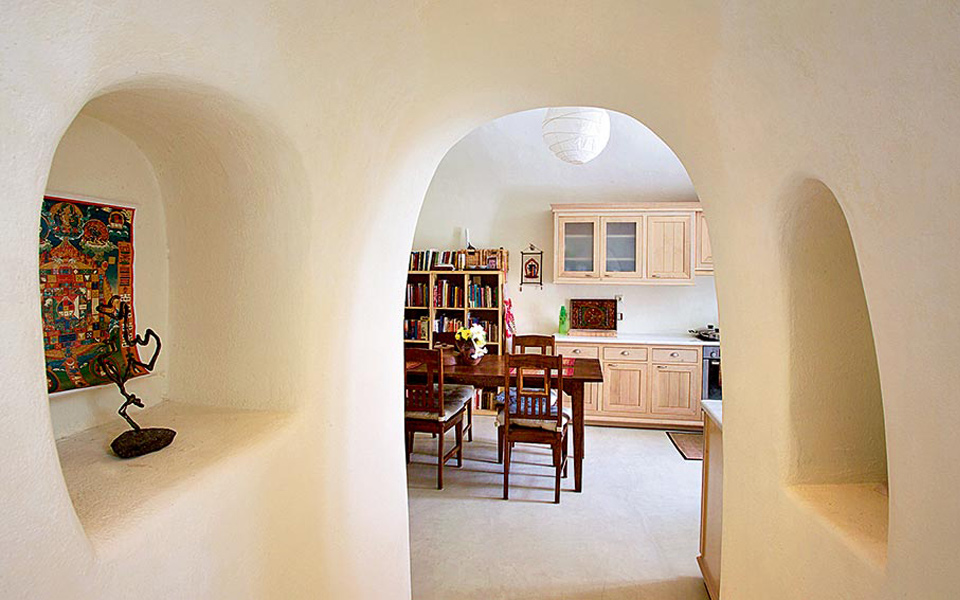
© Lefteris Miaoulis - Kiriaki Dovinou
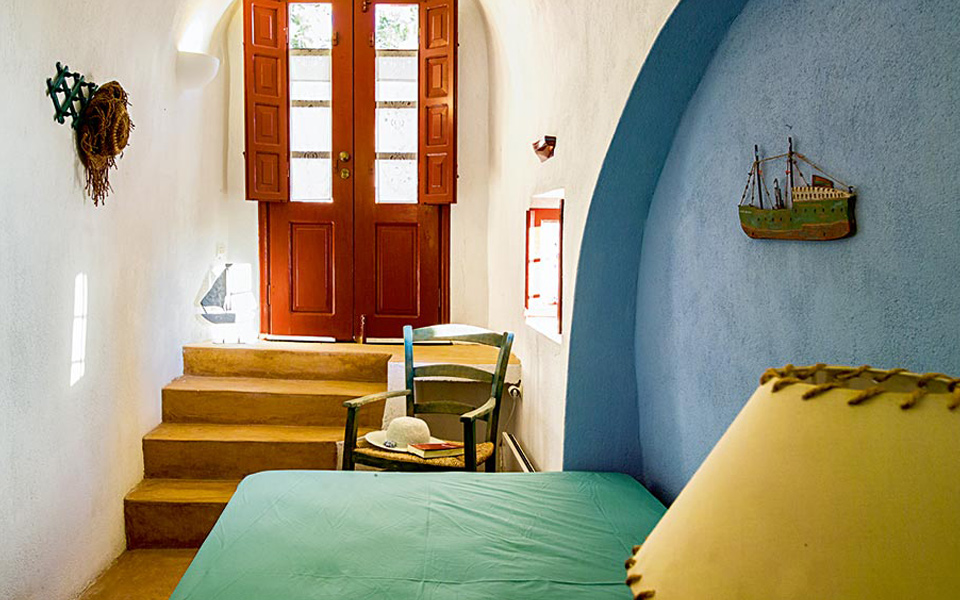
© Lefteris Miaoulis - Kiriaki Dovinou
With the passage of time, the qualities of Santorini’s vernacular architecture became widely accepted. In Oia, the captain’s houses expanded on this tradition with neoclassical and Venetian elements, making it distinct from other Greek settlements that flourished thanks to shipping.
The excavated houses never lost their charm, even after Santorini entered a period of decline following a major wave of immigration in the aftermath of World War II and a major earthquake in 1956, while the subsequent tourism boom gave them a new lease of life.
A pilot program launched by the Greek National Tourism Organization (GNTO) for the “Preservation and Development of Traditional Settlements,” implemented in Oia between 1975 and 1993, was awarded by Europa Nostra (1980) and at the Sofia Architecture Biennale (1986), contributing to a resurgence of interest in yposkafa.
Today in Oia, as in other settlements on the island, these unique structures have been converted into beautiful houses, luxury hotels, wineries that are open to the public and entertainment and art venues.

